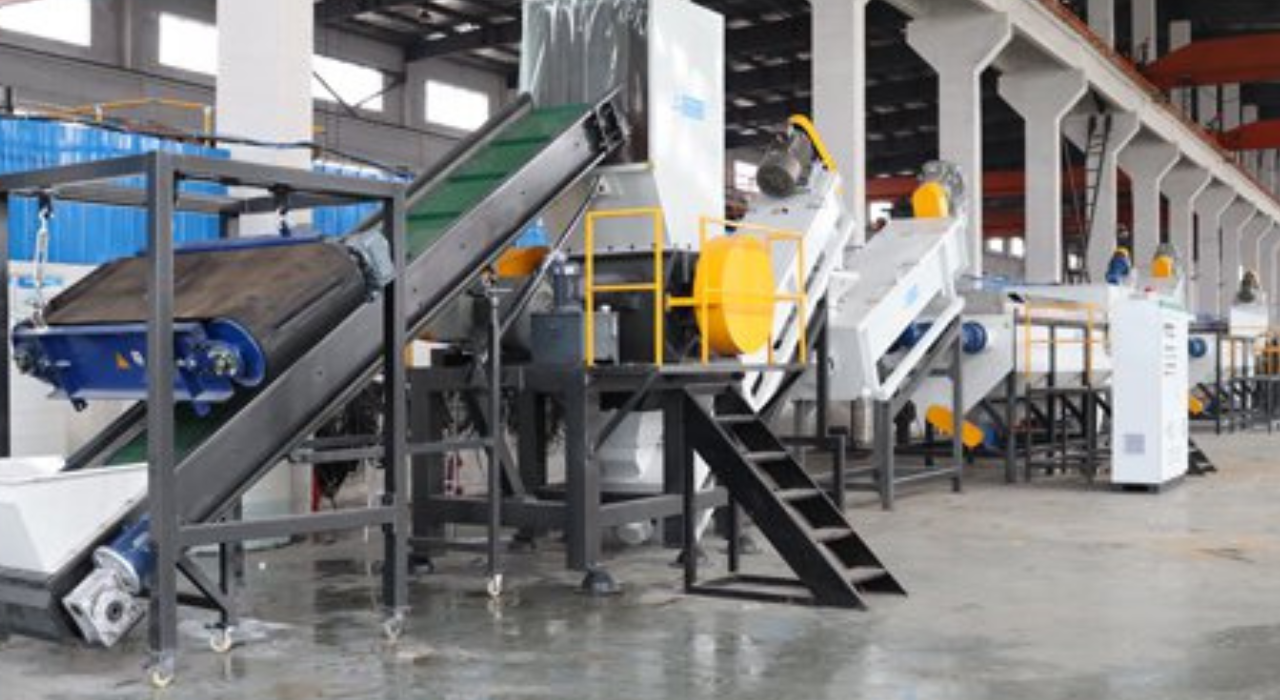PET (Polyethylene Terephthalate) recycling machines play a vital part in changing waste PET plastic, such as mineral water bottles, soda bottles, and drain containers, into clean, reusable PET flakes. These progressed machines automate the reusing preparation, guaranteeing proficient and thorough cleaning of PET waste. The reusing handle includes stages like passing on, de-labeling, smashing, washing, drying, and color sorting, all controlled by an electric cabinet for precision.
By changing over waste into high-quality PET flakes, these machines support the circular economy, permitting reused PET to be made into modern bottles and other items. This handle essentially reduces natural pollution by minimizing plastic squandering, highlighting the significance of PET reusing in economic waste management and asset preservation.
Key Steps in the PET Recycling Process?
Let’s explore the detailed steps included in the pet recycling machine reusing process, highlighting the key stages from waste collection to the generation of clean PET chips. Each stage is basic for productively changing discarded PET bottles into reusable materials, supporting supportability and diminishing natural contamination.
Collection and Sorting
After being gathered, the bottles are brought to a reuse office and go through a preliminary sorting procedure there. Progressed sorting systems are utilized to separate PET bottles from other types of plastic and contaminants.
Conveying
After sorting, the PET bottles are conveyed to the de-labeling and pulverizing areas of the recycling line. Conveyors are utilized to transport the bottles effectively through the diverse stages of the reusing preparation. This mechanized framework guarantees a continuous stream of materials, lessening manual dealing and expanding the general productivity of the recycling operation.
De-Labeling
De-labeling is a basic step within the PET reusing process. Names, caps, and cements joined to the PET bottles can contaminate the reusing stream in case not expelled. De-labeling machines utilize mechanical, chemical, or warm methods to strip names and cements from the bottles.
Crushing
Once de-labeled, the PET bottles are encouraged into crushing machines. These machines utilize sharp, pivoting edges to break the bottles into smaller, uniform pieces known as PET chips. Crushing the bottles into smaller flakes increases the surface zone, making it less demanding to wash and clean the material in the ensuing stages. The smashed PET flakes are at that point collected and transported to the washing section.
Washing
Washing is one of the most vital stages in the PET reusing handle. The smashed PET pieces experience different washing stages to remove soil, residues, and other contaminants. Washing frameworks utilize a combination of water, cleansers, and mechanical disturbance to clean the chips altogether. The pieces are inundated in washing tanks, where they are enthusiastically blended to oust and break down impurities. A few reusing lines join hot water or steam to improve the cleaning effectiveness.
Friction Washing
In addition to standard washing, friction washers give an additional level of cleaning. Grinding washers utilize high-speed mechanical tumult to clean the PET chips, guaranteeing that indeed adamant contaminants are removed. The contact created by these washers makes a difference in breaking down and disposing of oils, oils, and other residues that will not be fully expelled during the introductory washing stages.
Drying
After washing, the PET drops need to be dried to remove any remaining dampness. Drying systems regularly utilize hot discuss or infrared innovation to evaporate water from the drops. Proper drying is fundamental since dampness can cause problems amid the dissolving and expulsion forms, such as making bubbles or irregularities within the last item. The dried PET pieces are presently in a steady, ready-to-use shape, arranged for advanced handling or coordinated utilization fabricating modern plastic items.
Color Sorting and Quality Control
Before the PET chips are stowed and put away, they experience a final quality control and color sorting arrangement. Progressed optical sorting ma Flakes based on color, guarantee a reliable and high-quality yield. This step is especially vital for applications where the appearance of the recycled material is basic. The sorted and cleaned PET pieces are then assessed to ensure they meet the specified quality guidelines.
Bagging and Storage
The ultimate arrangement within the PET reusing handle is stowing and capacity. The cleaned and sorted PET flakes are bagged and stored in a controlled environment to preserve their quality. These pieces can presently be nourished into granulators to produce PET pellets, which are utilized to fabricate modern PET bottles and other plastic items.
Conclusion
PET recycling machines are basic in converting waste PET bottles into clean, reusable PET flakes. By incorporating progressed innovations and numerous stages of sorting, pulverizing, washing, grinding washing, drying, color sorting, and quality control, these machines guarantee the production of high-quality recycled materials.


